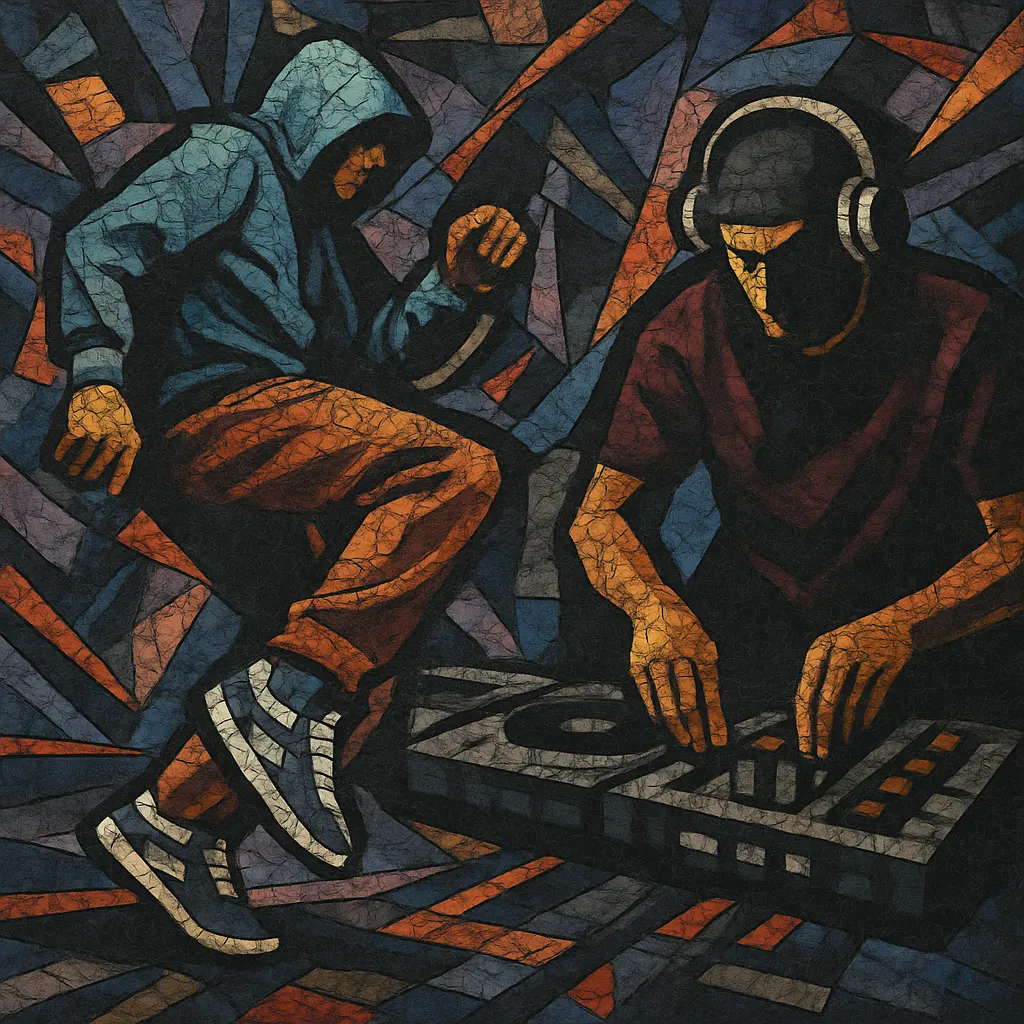Footwork is a high‑tempo Chicago dance music style centered around ~160 BPM, sparse drum programming, and chopped, mantra‑like vocal samples. It is designed for competitive dance battles, so its rhythms emphasize off‑grid syncopation, rapid switch‑ups, and negative space that challenges and energizes dancers.
Musically it sits between house and hip hop traditions: sub‑heavy 808/909 drums, jittery snares and claps, booming kicks, and looped fragments of soul, rap, or R&B are arranged into tense, angular patterns. Compared to juke, footwork tends to be more abstract and polyrhythmic, with fewer straight four‑on‑the‑floor passages and more broken, stuttered grooves.
Footwork emerged in Chicago in the early 2000s, evolving out of the city’s ghetto house and juke scenes that had grown from Chicago house and hip hop. Producers and DJs crafted faster, more fractured tracks to accompany increasingly intricate battle dancing on the South and West Sides—at skating rinks, community centers, and gym floors. Early architects such as RP Boo, DJ Clent, and Traxman pushed tempos to ~160 BPM and favored sparse, ultra‑syncopated drum patterns and looped vocal chants to drive dancers.
The genre’s name reflects the dance: fast, sliding foot patterns executed in a battle “circle.” Tracks deliberately emphasize sudden drops, turnarounds, and rhythmic feints that cue dancers’ moves. This feedback loop between dancers and producers shaped footwork’s characteristic off‑kilter feel—kicks and claps that dodge the grid, chopped phrases that taunt opponents, and bass that leaves space for movement.
Around 2010, footwork reached global audiences via Planet Mu’s “Bangs & Works” compilations, which showcased Chicago artists including DJ Roc, DJ Nate, and DJ Rashad. UK and European producers began engaging with the style; Addison Groove’s “Footcrab” and Machinedrum’s subsequent work helped translate the vocabulary to broader bass‑music contexts. The TEKLIFE collective, led by figures like DJ Rashad and DJ Spinn, became the scene’s international standard‑bearer.
DJ Rashad’s 2013 album “Double Cup” on Hyperdub brought critical acclaim by folding jazz, soul, and rap into footwork’s template. Following Rashad’s passing in 2014, TEKLIFE continued to expand the sound worldwide. Parallel scenes flourished in Japan (e.g., Booty Tune and artists like DJ Fulltono), Europe, and Latin America. Footwork’s rhythmic language now informs everything from experimental club and deconstructed forms to drum & bass hybrids like footwork jungle.


